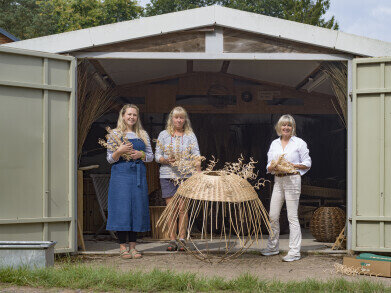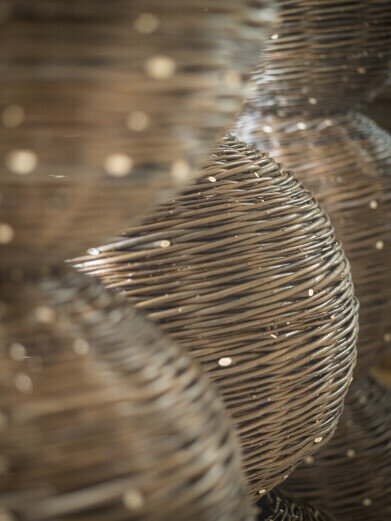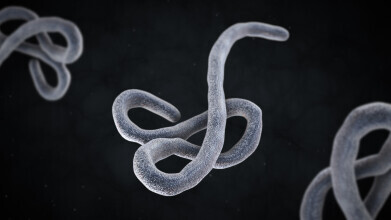-
 Sir Andrew Pollard (Credit: Dan Burn-Forti)
Sir Andrew Pollard (Credit: Dan Burn-Forti) -
 Weavers create willow structures of diseases
Weavers create willow structures of diseases -

-

-
 Ebola
Ebola
News & views
Art draws focus onto deadly diseases
Oct 09 2024
In celebration of three decades in which the Oxford Vaccine Group (OVG) has been tackling some of the world’s most deadly diseases, Oxford University’s Museum of Natural History commissioned a major art installation featuring dramatically upscaled bacteria, viruses and a parasite.
‘The Deadly Six: Oxford’s Battle with the Microbial World, by acclaimed Scottish artist Angela Palmer, was unveiled on September 26 to mark the 30th anniversary of the Oxford Vaccine Group..
Six, three-dimensional sculptures woven in English willow, represent different diseases for which OVG has developed a vaccine: pneumonia, meningitis, typhoid, Covid, malaria and Ebola. Five were suspended in the central room of the Museum, within the How Evolution Works gallery, with the sixth – a 2.4m long representation of Ebola weighing 75kg – lying at floor level.
“For 30 years, OVG has been working at the forefront of vaccine research in the fight against these diseases and many others, saving millions of lives, and helping people of all ages live longer, happier and healthier lives,” said Professor Sir Andrew Pollard, Director of the Oxford Vaccine Group, “and it is really exciting to see Angela bring this to life in her artwork.”
Palmer, whose sculptures are in museums worldwide, previously created a glass sculpture of the original Wuhan coronavirus particle sphere at 8 million times its size, which was unveiled at the Museum of Natural History and is now on display in London’s Science Museum.
“I had originally planned to use the same technique” explained Palmer, “However apart from the coronavirus, none of these have been modelled in 3D.”
Seeking an alternative concept she was inspired by a collection of strange, three-dimensional shapes woven in straw; “One particularly reminded me of the meningitis bacteria form and it struck that I could explore creating the entire installation in willow.”
“Willow was immediately appealing to me” Palmer added. “It is a native British tree and is imbued with medical associations dating back some 3,500 years.”
Palmer then tracked down two of the foremost weavers in the UK, Jenny Crisp and Issy Wilkes, who supported by renowned willow weaver in Mel Bastier, created the sculptures from the artist’s drawings and files of scientific illustrations, testing the potential capabilities of willow to its limits.
The familiar high-pitched ‘whine' of the malaria parasite Anopheles Funestus was also played on a loop that paused 10 seconds every minute to symbolise the fact that today a child under the age of 5 dies of malaria every 60 seconds.
The installation has been partly funded by the University of Oxford’s Gardens, Libraries and Museums (GLAM) division and will be open to members of the public from 26 September 2024 to 5 January 2025.
More information online
Digital Edition
Lab Asia 31.6 Dec 2024
December 2024
Chromatography Articles - Sustainable chromatography: Embracing software for greener methods Mass Spectrometry & Spectroscopy Articles - Solving industry challenges for phosphorus containi...
View all digital editions
Events
Jan 22 2025 Tokyo, Japan
Jan 22 2025 Birmingham, UK
Jan 25 2025 San Diego, CA, USA
Jan 27 2025 Dubai, UAE
Jan 29 2025 Tokyo, Japan


















